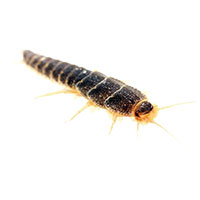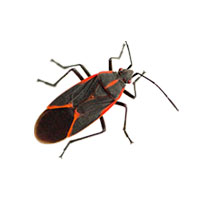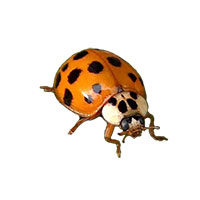Millipedes in Wisconsin
Even though millipedes don’t really have 1,000 lets, the name “millipede” is a compound word formed from the Latin roots mille (“thousand”) and pes (“foot”).
Millipede Diet
Millipedes eat a variety of decomposing plant and animal materials.
Millipede Habitat
Millipedes like moisture and normally live outdoors. Around homes, they live in flowerbeds, gardens, and under structures like dog houses and storage sheds. Indoors, millipedes are found in basements or crawl spaces where they eat decaying matter and wood particles.
Millipede Life Cycle
Adult millipedes overwinter in the soil. Eggs are deposited below the soil surface and hatch in about three weeks. The young grow gradually in size, adding segments and legs as they mature. Maturity is reached after two to five years, and they continue to live for several years thereafter.
Millipede Damage
Generally, they are beneficial in helping to break down dead plant matter. However, in large numbers, they may damage sprouting seeds, seedlings, or strawberries, and other ripening fruits in contact with the ground. Occasionally, individual millipedes wander from their moist living places into homes, but they usually die quickly because of the dry conditions and lack of food. When disturbed, they don’t bite, but some species exude a defensive liquid that can irritate skin or burn the eyes.
Millipede Prevention & Control
Millipede Prevention
Millipedes seldom need to be controlled. They do no damage indoors and pose a minimal health hazard. Those that stray indoors can be swept out or picked up with a vacuum cleaner. If multiple are found, a large infestation may be present, likely due to damp conditions. Indoors, dry out, and repair the problem areas using a dehumidifier. Outside, remove debris, including rotting wood, decaying grass, and leaves, from around the building foundation. This will eliminate moist hiding places and food sources. Sealing cracks and other openings to the outside helps prevent millipedes from entering.
Millipede Control
Your Batzner Service Specialist will come to your property to identify the source of the millipedes and determine the proper treatment method. Treatment will be applied to the perimeter of the building foundation, outside and inside depending on the situation. Sanitation recommendations are also made to help prevent future infestations.
For large-scale millipede infestations, count on a professional pest management service to take care of the problem knowledgeably and successfully.





